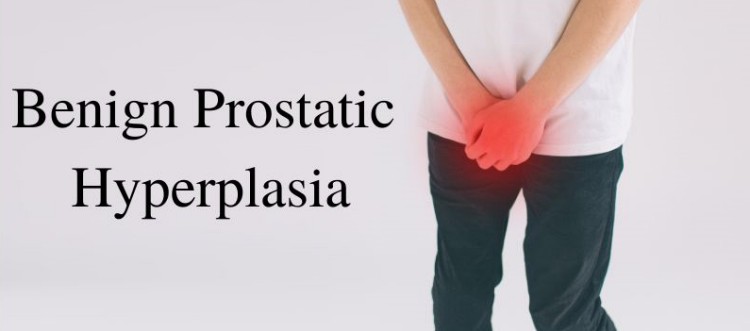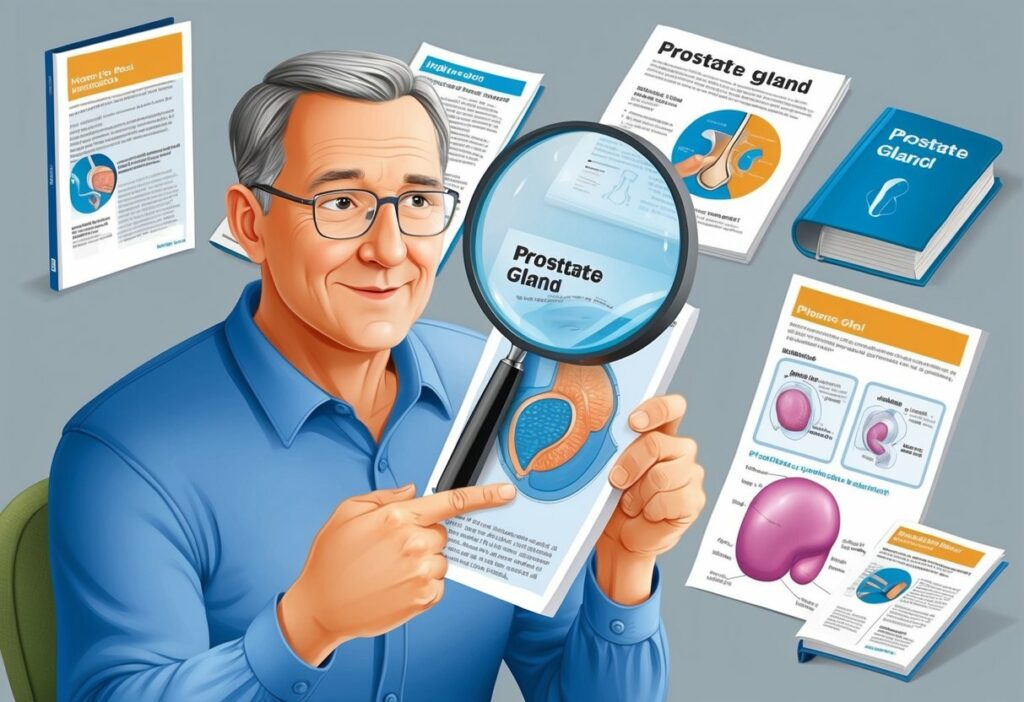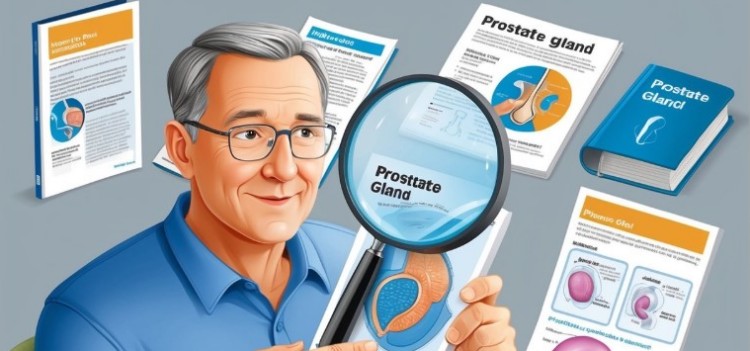How do I know if I have problems with my prostate? Benign Prostatic Hyperplasia, BPH: What to Look For – Recognizing Signs of an Enlarged Prostate. Everyone is talking about BPH, but nobody talks about the small changes that let you know there is a problem.
Benign Prostatic Hyperplasia (BPH) is a common condition affecting men as they age. The prostate gland naturally grows larger over time, potentially leading to urinary symptoms. Frequent or urgent need to urinate, especially at night, and difficulty starting or maintaining a urine stream are key indicators of an enlarged prostate.
Symptoms of BPH that happen before you realize it
- You may find yourself getting up during the night to urinate – You may just think, well I did have that last glass of beer and or the drink of water before going to bed.
- You may find that you appear to have dribbled a couple of drops of urine into your shorts – You may think to yourself, well I did not make sure I was finished before putting it away.
- You may find yourself standing closer to the urinal, this is something you would unconsciously do without really realizing it, until it becomes normal.
- None of these symptoms are painful, nor will any of them stress you out, they happen very slowly before you realize anything.

Recognizing the signs of BPH early can help men seek timely medical attention. While BPH is not cancerous, its symptoms can significantly impact quality of life. Healthcare providers typically diagnose BPH through a combination of physical exams, urine tests, and blood tests.
Treatment options for BPH range from medications to minimally invasive procedures and surgery. The appropriate treatment depends on the severity of symptoms and the individual’s overall health. Regular check-ups with a healthcare provider can help monitor prostate health and address any concerns promptly.
Key Takeaways
- Symptoms of BPH creap up on you before you realize it,
- BPH is an enlarged prostate enlargement and may cause urinary symptoms in older men.
- Diagnosis involves physical exams, urine tests, and blood tests.
- Treatment options include medications, minimally invasive procedures, and surgery.
Understanding Benign Prostatic Hyperplasia (BPH)
Benign Prostatic Hyperplasia (BPH) is a common condition affecting men as they age. It involves the enlargement of the prostate gland, which can lead to various urinary symptoms.
How common you ask? – more common than you know.
Benign prostatic hyperplasia is a non-cancerous enlargement of the prostate gland. BPH affects a significant number of men, especially in their later years.
The Older we get the more likely we are to have BHP.
- 50% of men over 50 have BPH
- 60% of men over 60 have BPH
- 70% of men over 70 have BPH
- 80% of men over 80 have BPH
- 90%of men over 90 have BPH
BPH can cause various urinary symptoms, including:
- Frequent urination
- Difficulty starting urination
- Weak urine stream
- Incomplete bladder emptying
- Dribbling – not with a basketball
These symptoms can significantly impact a man’s quality of life, affecting sleep patterns and daily activities.
Anatomy of the Prostate Gland
The prostate gland is a small, walnut-sized organ located below the bladder and in front of the rectum. It plays a crucial role in the male reproductive system.
- Surrounds the urethra
- Produces fluid that nourishes and protects sperm
- Normal size: about 20-30 grams in young men
As the prostate enlarges, it can compress the urethra, leading to urinary problems. This compression is the primary cause of BPH symptoms.
The Role of Age in BPH Development
Age is the most significant risk factor for developing BPH. The exact cause remains unknown, but hormonal changes play a crucial role.
Factors contributing to BPH development:
- Increased production of dihydrotestosterone (DHT)
- Changes in estrogen levels
- Alterations in cell growth factors
These age-related changes lead to prostate cell proliferation and gland enlargement. While BPH is not life-threatening, it can and will affect your life. You will learn never to pass up an opportunity to have a piss when you are out and about.
Early detection and management are bennefical for maintaining urinary health and overall well-being as we age.
Identifying Symptoms and Signs of BPH
Recognizing the symptoms and signs of benign prostatic hyperplasia (BPH) is helpful for early detection and management. Key indicators include changes in urinary patterns and discomfort during urination.
Recognizing Common Urinary Symptoms
Urinary symptoms are the primary indicators of BPH. These include:
- Difficulty starting urination
- Weak urine stream
- Frequent urination, especially at night (nocturia)
- Urgency to urinate – when you got to go you got to go!
- Feeling of incomplete bladder emptying
- Dribbling at the end of urination
In some cases, men may experience urinary retention, where they cannot empty their bladder completely. This can lead to discomfort and potential complications.
Differentiating BPH from Prostate Cancer
While BPH shares some symptoms with prostate cancer, there are key differences:
- BPH symptoms typically develop gradually
- Pain is not usually associated with BPH
- BPH does not cause weight loss or fatigue
- BHP is Benign, it does not really hurt you, until it progresses and then it just affects your quality of life
However, it’s important to consult a doctor for proper diagnosis, as prostate cancer can coexist with BPH. A medical professional will perform tests to distinguish between the two conditions.
Monitoring Symptoms Over Time
BPH symptoms often progress slowly. Men should track changes in their urinary habits, noting:
- Frequency of nighttime urination
- Changes in urine stream strength
- Instances of urgency or incontinence
Keeping a symptom diary can help identify patterns and progression. This information is valuable when discussing treatment options with a healthcare provider. Regular check-ups are essential, especially if symptoms worsen or new ones develop.
Diagnostic Process for BPH

First off ask yourself if you think you may have a prostate issue. Do you find yourself:
- Standing closer to the urinal because your stream is not as strong as it once was?
- Getting up in the night, even thoug you cannot remember drinking much fluid before bed
- Finding yourself with a couple drops of pee, that always seem to end up in your shorts
- Having to go to the bathroom RIGHT NOW 0 the situation is urgent.
- Haveing to go to the bathroom again shortly after – not fullying emptying your bladder.
These things will not happen overnight, they will happen slowly without you realizing that they have happened, until one day you may say to yourself – yes I have one or two, or several of these symptoms.
If you do you most likely have BPH. Get yourself checked out.
Anyone over 45 should add a PSA test to their next medical, over 50 you should add an transabdominal ultrasound – just to get a look at the prostate, etc.
BPH is not generally life threatening, but it does affect your quality of life. (Having to get up at night to pee, having to sit down to pee, always worrying you will leave a few drops in your shorts, etc.
Ok so you think you might have BPH – according to the stats, you probably do.
Getting an accurate diagnosis of Benign Prostatic Hyperplasia (BPH) involves a multi-step approach. Health care providers employ various methods to assess prostate enlargement and its impact on urinary function.
Physical Examinations and Health Assessments
The diagnostic journey used to start with a digital rectal exam. While this test is still useful, and indeed performed all the time. The first thing today is a Prostate Specific Antigen (PSA) test. By itself it will not tell you if you have an enlarged prostate,. but if your PSA numbers are high – then you need to get more tests.
My last PSA test was 0.78 and my prostate was estimated to be ~3.5 com (slightly enlarged according to the doctor.
The Digital Rectal Exam – DRE

I have yet to have a DRE, mostly because of the low PSA numbers and the small overall size (obtained with an abdominal ultrasound). So my doctor felt it was not necessary.
I know just the thought of a DRE conjours up an image of the guy on the right.
However…..
If you doctor does recommend a DRE then you should have it done. They will have determined that a DRE will hel;p them to clarify what is happening with your prostate.
During this procedure, a doctor inserts a gloved finger into the rectum to feel the prostate’s size and texture. This simple yet effective method can detect abnormalities or enlargement.
If the DRE does find your prostate enlarged or abnormal in any way then, a comprehensive health assessment follows. Patients discuss their medical history and symptoms with their health care provider. This conversation helps identify risk factors and rule out other conditions with similar symptoms.
Urine tests are crucial for detecting infections or blood in the urine. These tests can also reveal other urinary tract issues that may mimic BPH symptoms.
Advancements in Imaging and Testing
Modern diagnostic tools provide detailed insights into prostate health. Ultrasound imaging offers a non-invasive way to measure prostate size and shape. This technique helps doctors visualize any abnormalities.
Transabdominal ultrasounds are quick and easy to perform. Transrectal ultrasounds (TRUS) are not difficult, but they do involve inserting a small transmitter into the rectum.
In some cases, a cystoscopy may be recommended. This procedure involves inserting a thin tube with a camera into the urethra to examine the bladder and prostate.
For a more comprehensive evaluation, urodynamic studies might be performed. These tests assess bladder function and urine flow, providing valuable data on the severity of BPH symptoms.
Understanding PSA Levels
The prostate-specific antigen (PSA) test is a key component in BPH diagnosis. This blood test measures the level of PSA, a protein produced by the prostate gland.
Elevated PSA levels can indicate prostate enlargement, but they don’t necessarily confirm BPH. Other factors, such as prostate cancer or inflammation, can also raise PSA levels.
Doctors interpret PSA results in context with other diagnostic findings. If PSA levels are significantly elevated, an MRI may be scheduled and or a prostate biopsy might be recommended to rule out cancer.
Regular PSA testing helps monitor prostate health over time, allowing for early detection of potential issues.
Treatment Options and Management of BPH

Overall lifestyle and weight play major roles in keeping BPH away. Unfortunately many of us do not get enough exercise and do not eat as healthy as we would like.
Kegels for men are recommended to help strengthen bladded control, and indeed are recommended after some prostate treatments. Byt they can be used as a preventative measure as well.
Suppliments can play a role in keeping BHP away, though their role is still being evaluated. Some studies indicate that some supplements are effective, but other studies are not conclusive.
On a personal note – I have been using Beta-Stisterol and SawPalmetto for almost 10 years and I think they have been effective for me. They are readily available online. I have recently added more supplements to my diet, I do not take all of them every day, but I do thake most of them often.
Effective management of benign prostatic hyperplasia involves a range of approaches tailored to symptom severity and patient preferences. These include medications, minimally invasive procedures, surgeries, and lifestyle modifications.
Medications to Alleviate BPH Symptoms
Alpha-blockers like terazosin, doxazosin, and tamsulosin are commonly prescribed to relax prostate muscles and improve urine flow. These medications work quickly but may cause side effects such as dizziness or fatigue.
5-alpha reductase inhibitors like finasteride and dutasteride shrink the prostate gland over time. They can take several months to show effects but are effective for long-term symptom management.
Tadalafil, typically used for erectile dysfunction, can also improve BPH symptoms. It’s particularly useful for men experiencing both conditions.
Combination therapy using an alpha-blocker with a 5-alpha reductase inhibitor often provides more significant symptom relief than either medication alone.
Minimally Invasive Procedures and Surgeries
Transurethral resection of the prostate (TURP) remains the gold standard surgical treatment for BPH. It involves removing prostate tissue to widen the urethra.
Newer, less invasive options include prostatic urethral lift, which uses implants to hold enlarged prostate tissue away from the urethra. This procedure offers faster recovery times and fewer complications.
Laser therapy techniques like GreenLight or holmium laser enucleation of the prostate (HoLEP) vaporize or remove excess prostate tissue with less bleeding than traditional surgery.
Transurethral incision of the prostate (TUIP) involves small cuts in the prostate and bladder neck to reduce urinary obstruction. It’s suitable for smaller prostates.
One of the newest treatments is the Optilume BPH TURBO (Trans-Urethral Radial-dilation Balloon Opening). They put a baloon inside the prostate with medication to shrink the tissue on the outside of the baloon. This is a promising new technique.
Lifestyle Changes and Home Remedies
Simple lifestyle modifications can significantly improve BPH symptoms. These include:
- Limiting fluid intake before bedtime
- Avoiding caffeine and alcohol, especially in the evening
- Double voiding (urinating twice in succession) to empty the bladder more completely
- Maintaining a healthy weight through diet and exercise
Pelvic floor exercises (Kegels) can strengthen muscles involved in urination and improve control. Regular physical activity may also help reduce BPH symptoms.
Watchful waiting is appropriate for men with mild symptoms. This involves regular monitoring without active treatment, allowing for intervention if symptoms worsen.
Frequently Asked Questions

Benign Prostatic Hyperplasia (BPH) raises many questions for men experiencing symptoms. Understanding the causes, treatments, and implications of BPH is beneficial for peace of mind and effective management.
What is the most effective treatment for an enlarged prostate?
The most effective treatment for an enlarged prostate varies depending on the severity of symptoms and individual patient factors. Medications like alpha-blockers and 5-alpha reductase inhibitors are often the first line of treatment.
For more severe cases, minimally invasive procedures such as Optilume BPH TURBO and or transurethral resection of the prostate (TURP) or laser therapies may be recommended. These treatments aim to reduce prostate size and alleviate urinary symptoms.
Can you outline the causes of prostate enlargement?
Prostate enlargement, or BPH, is primarily associated with aging and hormonal changes. As men get older, the balance of hormones in their body shifts, leading to prostate growth.
Genetic factors may also play a role, as BPH tends to run in families. Additionally, lifestyle factors such as obesity and lack of exercise may contribute to the development of BPH.
What are the latest advancements in treating enlarged prostate?
Recent advancements in BPH treatment include minimally invasive procedures like Optilume BPH TURBO, UroLift and Rezūm.
- Optilume BPH TURBO uses a balloon with medicine to open and medicate the urethra within the prostate – delivering medication right there.
- UroLift uses small implants to hold the enlarged prostate tissue out of the way, improving urine flow.
- Rezūm therapy uses water vapor to destroy excess prostate tissue.
- These newer treatments often result in fewer side effects and quicker recovery times compared to traditional surgical options.
How does an enlarged prostate impact sexual function?
An enlarged prostate can affect sexual function in several ways. Some men may experience difficulty achieving or maintaining an erection due to reduced blood flow.
Ejaculation problems, such as reduced ejaculate volume or painful ejaculation, can also occur. It’s important to note that BPH itself does not cause erectile dysfunction, but some treatments for BPH may impact sexual function.
What are the common symptoms indicating you might have an enlarged prostate?
Common symptoms of an enlarged prostate include frequent urination, especially at night, and difficulty starting or stopping urination. Men may also experience a weak urine stream or a stream that stops and starts.
Other indicators include feeling that the bladder is not completely empty after urinating and urgency to urinate. These symptoms can significantly impact quality of life if left untreated.
If I have BPH does this mean I have Prostate Cancer?
No, having BPH does not mean that you have prostate cancer. The symptoms of prostate cancer are similkar to BPH, so you should get checked out to be sure.
Prostate Cancer victims may experience:
- blood in semen
- blood in urine
- unintentional weight loss
- night sweats
- bony back pain, or other bone pain
- erectile dysfunction
It is important to remember, any or none of these symptoms may be present if you have prostate cancer. If you have BPH, then at a minimum have a PSA test to make sure your PSA levels are not elevated.
Is it possible to completely cure an enlarged prostate?
While it’s not possible to completely cure an enlarged prostate, many effective treatments can manage symptoms and improve quality of life. Medications and minimally invasive procedures can significantly reduce prostate size and alleviate urinary symptoms.
In some cases, lifestyle changes such as maintaining a healthy weight, exercising regularly, and limiting fluid intake before bedtime can help manage symptoms. Regular check-ups with a healthcare provider are essential for monitoring the condition and adjusting treatment as needed.

